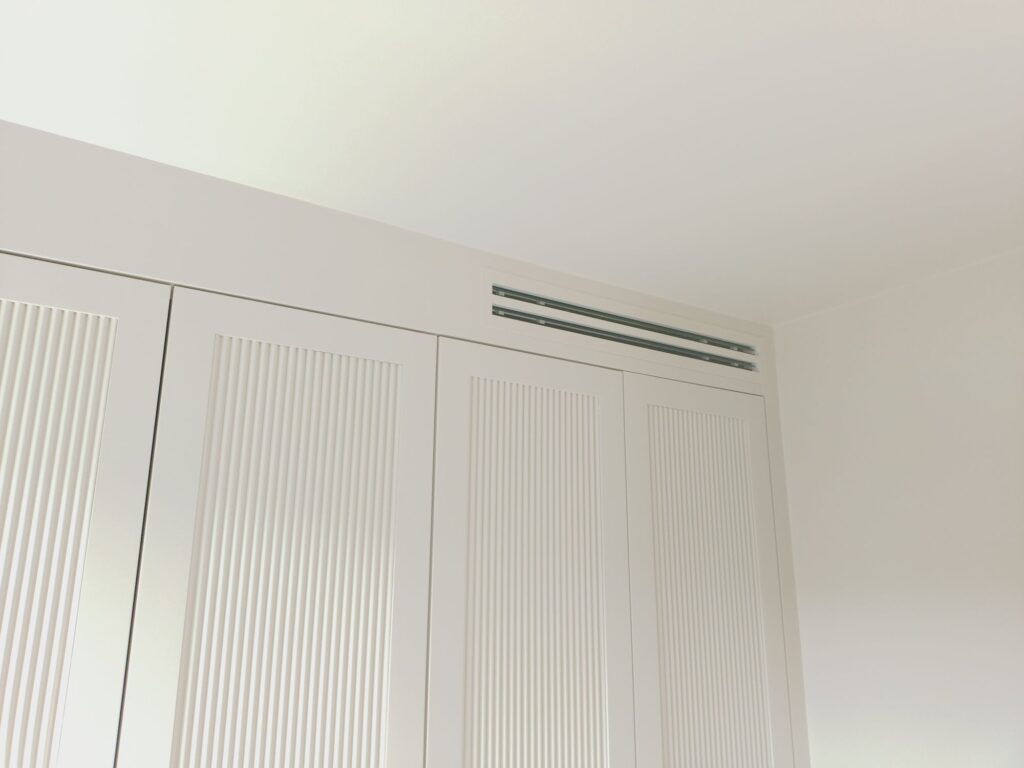The Invisible Embrace: Hidden Ducted Air Conditioning Across London and the Home Counties
The pursuit of comfortable indoor environments has long driven innovation in building services. In the increasingly warm summers experienced across the South East of England, the demand for effective cooling solutions has surged. Amidst this rising need, hidden ducted air conditioning has emerged as a sophisticated and highly desirable option, offering an invisible embrace of thermal comfort that seamlessly integrates with the diverse architectural heritage of London, Oxfordshire, Buckinghamshire, Bedfordshire, and Hertfordshire.

The fundamental appeal of hidden ducted air conditioning lies in its aesthetic discretion. Unlike wall-mounted or freestanding units that can protrude unsightly into a room, ducted systems conceal the main operating components within ceilings, walls, or even floor voids. The conditioned air is then delivered through subtle grilles or slot diffusers, often custom-painted to blend with the interior design. This visual invisibility is particularly prized in regions like Oxfordshire and Buckinghamshire, renowned for their picturesque villages and historic market towns, where preserving architectural integrity is paramount. Similarly, in London’s varied housing stock, from Victorian terraces to contemporary penthouses, the ability to maintain clean lines and unobstructed views is a significant advantage, ensuring that modern comfort doesn’t come at the cost of visual harmony.

Beyond aesthetics, ducted systems deliver superior comfort and air quality. By circulating air through a network of ducts, they achieve a far more even temperature distribution across multiple rooms or entire floors, eliminating the hot and cold spots common with single-point cooling solutions. This zoned comfort is invaluable in larger properties prevalent in the Home Counties, where different areas may have varying thermal demands. Furthermore, these systems often incorporate advanced filtration, removing allergens, dust, and pollutants, contributing to a healthier indoor environment – a crucial benefit for families in both bustling urban centres and more rural settings, especially during allergy seasons. The quiet operation of ducted units, with the main fan unit typically situated remotely, also ensures a peaceful atmosphere conducive to relaxation and productivity.

Energy efficiency stands as another cornerstone of hidden ducted air conditioning’s growing popularity. Modern ducted systems are often equipped with inverter technology, which allows them to modulate their output based on demand, rather than operating at full power intermittently. This leads to significant energy savings. Moreover, the ability to create distinct “zones” within a property, particularly useful in larger homes in Bedfordshire and Hertfordshire, means that only occupied areas need to be conditioned, further reducing energy waste. While the initial investment for a ducted system can be higher than for simpler split units, the long-term operational savings and enhanced property value often justify this outlay, aligning with the increasing focus on sustainable living across these counties.
However, the implementation of hidden ducted air conditioning is not without its challenges, particularly given the age and variety of properties in these regions. Space constraints are a common hurdle, especially in older London properties and charming but often compact cottages in Oxfordshire and Buckinghamshire. Integrating the necessary ductwork into existing structures can require significant modifications, such as creating false ceilings or finding creative routes through cupboards and unused spaces.

Listed buildings and properties within conservation areas pose an even greater complexity. Local planning authorities in all these counties have stringent regulations to protect heritage, meaning external condenser units or any visible alterations often require planning permission and listed building consent. This necessitates careful planning, detailed architectural drawings, and a deep understanding of local heritage guidelines. In such cases, internal-only ducted systems, which avoid external units, become particularly attractive, though they present their own set of installation complexities. Furthermore, electrical infrastructure in older properties may require upgrades to accommodate the power demands of modern HVAC systems.

Despite these complexities, the trend towards hidden ducted air conditioning in London and the surrounding Home Counties is set to continue. As climate change brings warmer summers and homeowners increasingly seek sophisticated, efficient, and aesthetically pleasing solutions, the invisible embrace of ducted air conditioning offers an unparalleled level of comfort that harmonizes with the distinct character of these diverse regions. It represents a forward-thinking investment in well-being, property value, and a more comfortable future.
